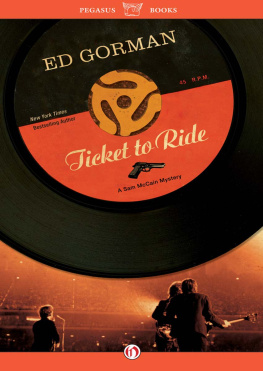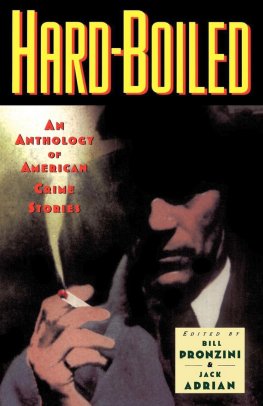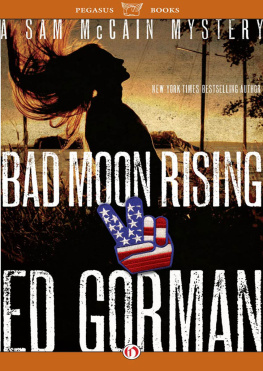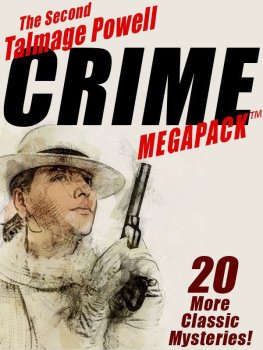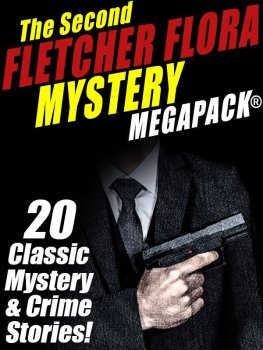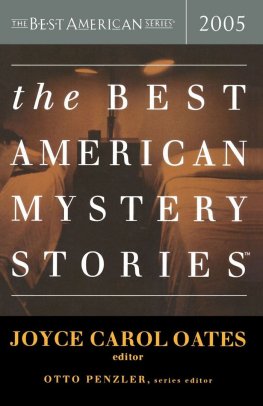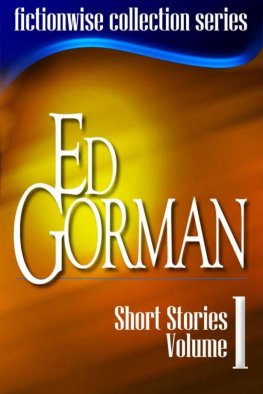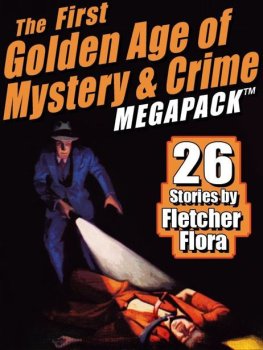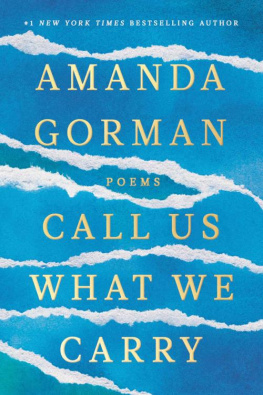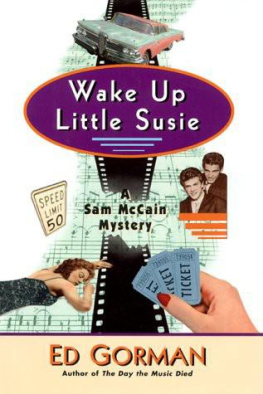The World's Finest Mystery
and Crime Stories
Second Annual Collection
Edited byEd Gorman
A TOM DOHERTY ASSOCIATES BOOK
New York
www.ebookyes.com
This is a work of fiction. All the characters and events portrayed in the stories in this anthology are either fictitious or are used fictitiously.
THE WORLD'S FINEST MYSTERY AND CRIME STORIES: SECOND ANNUAL COLLECTION
Copyright 2001 by Tekno Books and Ed Gorman
All rights reserved, including the right to reproduce this book, or portions thereof, in any form.
A Forge Book
Published by Tom Doherty Associates, LLC
175 Fifth Avenue
New York, NY 10010
www.tor.com
Forge is a registered trademark of Tom Doherty Associates, LLC.
ISBN 0-312-70241-8
First Edition: October 2001
FORGE BOOKS BY ED GORMAN
Moonchasers and Other Stories
Blood Games
What the Dead Men Say
(as editor)
The World's Finest Mystery and Crime Stories
First Annual Collection
The World's Finest Mystery and Crime Stories
Second Annual Collection
(as E. J. Gorman)
The First Lady
The Marilyn Tapes
Senatorial Privilege
Dedicated
to
Janet Hutchings
and
Cathleen Jordan
Acknowledgments
Thanks to Jon L. Breen, Edward D. Hoch, Maxim Jakubowski, Thomas Woertche, Lucy Sussex and David Honeybone, and Edo van Belkom, for their informative summaries of the mystery field, and of course, to my editor at Forge Books, Jim Frenkel, and his able staff.
Contents
The Year in Mystery and Crime Fiction: 2000
Jon L. Breen
Call 2000 "The Year of the Puzzle." Even what century we were in was a puzzle: Was this the first year of the twenty-first, as millions of January 1 revelers including me chose to believe, or the last of the twentieth? (The answer has something to do with a binary system versus a decimal system, but I'm no mathematician.) Then there was the more significant math puzzle, with elements of the jigsaw: Who exactly was elected president of the United States? It took an extended squabble over dimpled chads, flexible deadlines, doctored absentee voter applications, and dueling supreme courts to decide.But what, aside from providing promising plot material, did these real-life puzzles have to do with those created by writers of crime and mystery fiction, where the deductive puzzle beloved of traditionalists has been declining for decades? Though the formal detection of Ellery Queen and John Dickson Carr didn't make an unexpected comeback, that most maligned, patronized, and (with book buyers) popular of Golden Age icons, Agatha Christie, had a big year. She was voted the best crime writer of the century by the membership of the Anthony Boucher Memorial Mystery Convention (Bouchercon), held in Denver, and her Hercule Poirot novels were voted the best series. One of the year's secondary sources was an encyclopedic guide to her works, while another was a deconstructionist reconsideration of the plot of her most famous book. Christie even had a new novel this year sort of.
Spider's Web (St. Martin's Minotaur) was the third in a series of novelizations of her plays by Charles Osborne.Meanwhile, at the same mile-high convention, the Private Eye Writers of America gave their lifetime achievement award to master puzzlemaker Edward D. Hoch, a writer more associated with impossible crimes and fair-play clues than blows to the head and rye bottles in the desk drawer.Giving hope to the more literal-minded traditionalists, no less than two authors, Nero Blanc and Parnell Hall, were practicing the crossword-puzzle mystery, invented by Dorothy L. Sayers in the 1920s but produced since by the late Herbert Resnicow and few others.With the growing blockbuster obsession of the major corporate book publishers, many readers and writers of bread-and-butter mystery fiction confronted another kind of puzzle: the maze they had to master to find each other.Finally, one of the longstanding puzzles of crime and mystery fiction, but I don't know if it's a math puzzle, a word puzzle, a political puzzle, or (for those involved) another maze: Why have American and British markets shown such resistance to crime fiction from other languages and cultures? And why does the whole world seem to view the crime novel as an Anglo-American art form?Early in 2000, during a visit to a national park in Chile, my wife and I learned that our tour guide was a mystery enthusiast who enjoyed a number of English-language writers in the original or in Spanish translation. After recommending some other writers she might enjoy, I asked her what contemporary Latin American crime writers she could recommend. She was unable to name a single one, indeed seemed to doubt there were any. The only one I could think of was Mexico's Paco Ignacio Taibo II, several of whose brilliant and offbeat novels have been published in the U.S.A., but surely there must be others.It's true that the French, with Emile Gaboriau, Maurice Leblanc, and Gaston Leroux, have been accorded some historical importance, and at least some foreign-language writers have enjoyed a brief or extended vogue in Britain and America: Maigret's Belgian creator Georges Simenon, of course; the German author of
Night of the Generals and other World War II fiction, Hans Hellmut Kirst; the Italian author of the bestseller
The Name of the Rose, Umberto Eco; the Swedish police proceduralist team of Maj Sjwall and Per Wahloo; and a pair of Dutch authors, Robert van Gulik and Janwillem van der Wetering, both of whom wrote in English. Numerous others have at least occasionally cracked the English language market in translation: the Italian team of Carlo Fruttero and Franco Lucentini; several Japanese writers (Seicho Matsumoto, Masako Togawa, Edogawa Rampo); the French Frederic Dard (Sanantonio) and Hubert Monteilhet; the Russian Yulian Semyonov; the Spanish Manuel Vzquez Montalban; and the Scandinavians Poul Orum, Jan Ekstrom, and K. Arne Blom. Among the prominent foreign-language writers currently being published in English are Holland's Baantjer, many of whose DeKok novels have appeared in trade paperback translations from Intercontinental, and Sweden's Henning Mankell, whose novels about Kurt Wallander are published by The New Press. But the fact remains that the balance of trade in crime fiction has always favored English-language works.In December 2000, Club Med sponsored a mystery-novel conference in the Bahamas that drew such distinguished American writers as Ed McBain, Donald E. Westlake, James Crumley, and Nevada Barr. Several foreign-language writers were also invited: Taibo of Mexico, Leonardo Padura of Cuba, Santiago Gamboas of Colombia, Laura Grimaldi of Italy; Thierry Jonquet, Chantal Pelletier, and Dominique Manotti of France; and Jos Angel Manas of Spain. A check of Amazon.com shows that of this group, only Taibo has any books available in English translation. The formation of the International Crime Writers Association a few years ago, and its English-language anthologies, have helped to bring some international writers to the attention of English-language readers, but English-speaking countries continue to have a resistance to foreign writers that does not exist in other countries where English-language books in translation are popular. While you could say the same about English-language motion pictures, at least the best of foreign film can be expected to turn up with subtitles at the big-city art houses. No such equivalent exists for foreign crime fiction.
THE WEB
The discussion of internationalism leads conveniently to the increasing importance of the Internet as a source of up-to-date information. Quite often I get news of the mystery field in the U.S. and Great Britain first from a Web site that is maintained in Japan: Jiro Kimura's The Gumshoe Site (www.nsknet.or.jp%jkimura). Another useful site, The Mysterious Homepage: A Guide to Mysteries and Crime Fiction on the Internet (www.webfic.com/mysthome/mysthome.htm) is maintained in Denmark by Jan B. Steffensen.Some other sites I've found particularly valuable are Tangled Web U.K. (www.twbooks.co.uk), a great source of British reviews by H. R. F. Keating, Martin Edwards, Val McDermid, and other well-known author-critics; and the Thrilling Detective Web Site (www.thrillingdetective.com), a good stop for lovers of the hardboiled. My most exciting recent find, though, is Michael E. Grost's A Guide to Classic Mystery and Detection (members.aol.com/mg4273/classics.htm), which includes some contemporary subjects but is most valuable for its historical coverage. You'd be hard-pressed to find a print source that covers in such detail writers of the past like Lee Thayer, Octavus Roy Cohen, Burton E. Stevenson, Helen McCloy, and Lawrence G. Blochman.
Next page

